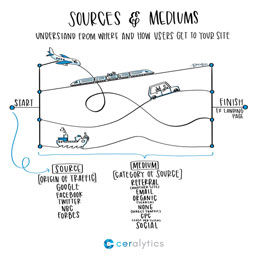The answer to improving content marketing is not always more content
How often are you overwhelmed by information as a consumer? How often do you think about it as a content marketer? It is our responsibility to not only find ways to optimize our content to cut through the clutter, but to also be mindful of contributing to the information build up before we end up featured on the content version of Hoarders.
Despite good intentions, it still may be time for an intervention. In the sixth annual Content Marketing Benchmarks, Budgets, and Trends-North America report, the Content Marketing Institute reported that “approximately 80% of B2C marketers plan to produce more content in 2016 vs. 2015, regardless of their organization’s effectiveness, size, documentation of content marketing strategy and editorial mission, clarity around success, or communication frequency.” Even more alarming is that “while 73% of the most effective B2B marketers plan to produce more content, the least effective plan to produce even more (81%)!”
So, most of us are going to produce more content. Now what?
Let’s make a pact to NOT produce content for content’s sake. Let’s commit to produce the right content, for the right reasons, at the right time.*
Let’s commit to produce the right content, for the right reasons, at the right time. Share on X“Content marketing is not just about adding more content, it is about creating information for a target audience that has a particular purpose and intended outcome. Content drives awareness, but also social interaction, customer engagement and sales.” – Lee Odden, author of Optimize and Digital marketing & PR thought leader
Here is how we can do that successfully.
What: create the right content
Avinash Kaushik has been telling us for years that the right content is “anything that adds value to the reader’s life.”
To successfully add value, we have to identify our target audiences and dedicate time to understanding their needs, goals, and pain points (a common approach for this type of research is the creation of buyer personas). Then build or curate content over time that fits those profiles.
Why: create content for the right reasons
Content must also create value in some way for the business. This win-win scenario reminds me of Michael Porter’s concept of shared value. Porter, a Harvard Business School Professor and sought after strategy consultant, introduced the concept of “Corporate Social Value” in a 2006 HBR article, and later updated the concept in 2011. The basic idea is: For-profit organizations have the opportunity to redefine their business model in a way that creates social value AND economic value at the same time.
Without getting too complicated or in depth here, the purpose of our content should be to create shared value for our audience AND our business.
The purpose of content is to create shared value for our audience AND our business. Share on XUltimately, we must be able to connect our content marketing efforts to the bottom line metrics that leadership cares about. If we aren’t doing that, then we are in the business of giving away content. If this content has value, great! You are a content philanthropist. The downside of content philanthropy is a lack of sustainability (in other words, how long will your boss let you go on creating this valuable content when no value is being returned to the business?). If your content doesn’t have much value, then quite frankly, we consider that “content litter” and a key factor in our information overload problem.
Note: For more information on CSV, you can watch Porter speak at TED talk or listen to a good overview of the three ways businesses can create shared value in this Forbes article.
How: create content that can be found and digested by your audience at the right time
Once we are making the right content for the right reasons, we can focus on the typical marketing optimization tactics that will help our content find it’s way to the right audiences. Odden refers to optimization as a the long-term effort and actions that help your content perform at its best.
From keywords to metadata, it is important to get all of these basics right. More importantly though, content marketing optimization also includes up front strategic planning and metric selection, and consistent measurement, testing and adjustments. Metrics must be tailored to the specific goals of your business, and go deeper than page visits. It is important not to get overwhelmed by the data available, and “focus on the critical few” that will identify how your content impacts revenue and profitability for your specific business.
“When you present a large number of Visits or Page Views or Followers, what you are essentially inferring is that more is better. You are inferring something that is not there: success. Or you are hypothesizing, when you report that data, that these large numbers mean that customers are happy and business is successful. I believe it is dangerous to make that inference. Why not seek direct success indicators?” – Avinash Kaushik
If you are looking for a solution that helps you get at those success indicators, check out how our tool works and will help you understand all stages of the marketing funnel.
Ultimately, our hope is simple. Let’s not waste any more time creating content that will end up being internet litter. Instead let’s build content marketing strategies based on what optimized content truly is: the right content (value for our audience), for the right reason (value for our business), at the right time.
*Shout out to my Dad, for teaching me the life mantra “Do the right thing, for the right reason, at the right time.”


